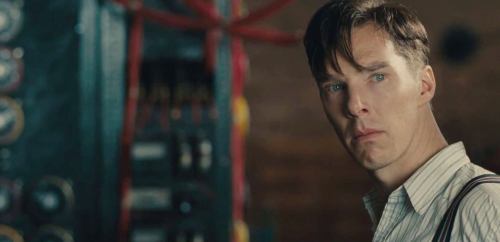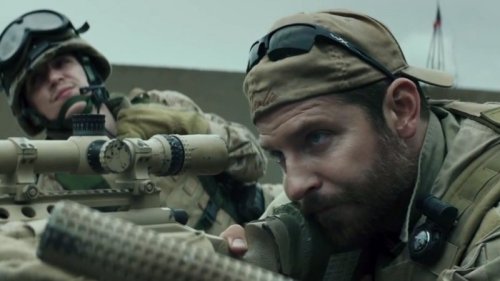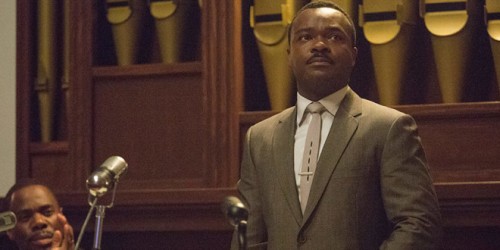
Part of the thrill of watching the Oscars ceremony every year is rooting for your favorite movie to win Best Picture. For many, a reason to view the awards or even look at the list of nominees is to be informed on what movies (often overlooked by general audiences) to watch. I’m telling you that this year all of them are worth your time. It’s a great year for Best Picture nominations, snubbing very few movies in the category without great debate.
Not many of us have seen all the nominees and often only cheer on the one or two we have seen. When a movie we haven’t seen gets the win, we don’t know how to feel about it since we don’t actually know whether the right choice was made or not. Often people will assume the topic of the movie or pretentiousness gave one film the edge over the bigger blockbuster we all saw. If you’d like to know how they really do stack up against each other from someone who has seen them all and can comment on them with critical evaluation without prejudice or pretension, read on. It’s a good list to know even if you have no intentions of watching the event. So here they are in ascending order.
-
The Imitation Game

It says something about 2014’s movies when The Imitation Game is the weakest of the candidates for Best Picture. It’s based on the remarkable true story of Alan Turning, a British cryptanalyst, who played a large role in inventing a machine in order to break the Nazi “Enigma” code in World War II and became the father of computer science. This movie explores various cerebral concepts such as how we define intelligence. The conversation is pertinent in our modern day world as we approach the reality of artificial intelligence. It also explores the differences in the way human minds think and what they mean to our existence. Much of this movie’s power comes from Turning’s tragic end after being exposed as a homosexual and is chemically castrated. While the movie comes close to achieving a high level of insight, it ultimately fails short of the mark. The transparent deviations from history made to increase the tension and fit a movie format more concisely run the film afoul. While liberties with historical fact run rampant in movies as a whole and are not sins in themselves, easily spotted changes and cliches are unacceptable. The visuals are also so glaringly poor that they’re worth noting. Benedict Cumberbatch plays Turning and received a Best Actor in a Leading Role nomination for his part, but is essentially another version of his Sherlock Holmes character in the BBC series.
-
The Grand Budapest Hotel

Director Wes Anderson’s fingerprints are all over every frame of this witty comedy. That means symmetry, bright colors, and unorthodox but effective moments of characters pausing. If you have seen and liked any of his previous films, you will enjoy this one as well. Superb acting, charmingly painted facades, and likeable characters give plenty of reason to see Wes Anderson’s great piece of filmmaking. While his earlier films can be seen as courageous for risk taking, this style is more of the same as before. Therefore, all that separates this film from his others is the plot. It follows three characters: an author listening to an elderly hotel owner narrate the majority of the movie, the narrator as a lobby boy, and the concierge the lobby boy worked for referred to as Monsieur Gustave H. Gustave is a charmingly candid and civil man trying to prove his innocence after his is framed for the murder of the hotel’s owner, Madame D, who leaves him a priceless painting. It’s hilarious and is absolutely worth a watch for those than appreciate alternative filmmaking styles.
-
Whiplash

While certainly the smallest picture in the list, it is not lacking in great moments. Andrew Neyman (Miles Teller) is a jazz drummer in a prestigious music school vying for the respect of a ruthless and physically abusive teacher Terrence Fletcher (J.K. Simmons). Fletcher demands the best, and Neyman is determined to excel. The film boasts the unhinged performance of J.K. Simmons who earned a nomination for his part. Music plays a tremendous part in this movie. By the end you, the viewer, are able to hear the difference between good and great. The movie stops and starts repeatedly in the way of music-then-dialogue with actors’ well done expressions making the audience care about both parts. It is not for those whose attention easily drifts when watching movies as each moment is crucial to gaining a completely experience.
-
Boyhood
Twelve years in the making, this film takes a grownup view of a fictional character’s path from child to young adult. It showcases believable characters and situations going through life troubles. It jumps from year to year without announcement and blends stages of adolescent life well. The film is short on plot beyond what happens in a particular year but heavy on theme. Vision and preparation helped make the movie what it is today. While an impressive feat of filmmaking, the story is not quite enough to warrant a higher place on the list.
-
The Theory of Everything

Another biopic, this film follows the life of renowned theoretical physicist Stephen Hawking from his time at Cambridge University when just meeting his first wife (before his onset of ALS) to after their separation, the release of A Brief History of Time (which he authored), and to the loss of most of his muscle use. The portrayal of the scientist by Eddie Redmayne is heartbreakingly realistic and is more than worthy of this year’s Oscar for Best Actor in a Leading Role. He performs the various stages of motor-neuron disease so well that it pulls moviegoers in believing it completely. Stephen and his first wife, Jane, are sympathetic and human in this piece. In it, they are coping under debilitating circumstances while Stephen continues to excel in the field of science and earns status as a celebrity. What is done with the story is so creative and beautiful without at all compromising the integrity of reality. This is a must-see.
-
Birdman (or the Unexpected Virtue of Ignorance)

This film may lose moviegoers in the first couple minutes with the immediately identifiable pretentious alternative title and opening credits. Indeed the beginning moments of action are questionable. But as the movie gets going, it reveals itself to go deeply into criticism and desire of acceptance. The movie is in part a commentary on pretension. Michael Keaton plays an actor who used to play a superhero called “Birdman” and creates a play to gain respect from critics who have long ridiculed him for his blockbuster past. The reality of Keaton having played Batman adds a little something to it. Those in the art community or any other exclusive field can directly relate to Keaton’s struggle, but his character takes it to a mentally unhealthy level. The movie follows one continuous shot that jumps in time until the climax when it suddenly abandons the style. Unfortunately, the ending seconds are non-sensical and are the point of some debate. The cast is phenomenal throughout and could carry the movie on their own if they had to. This film is best enjoyed by those that like to intensely think while watching.
-
American Sniper

Those who revile this movie outright fail the litmus test. To say that the film is pro-war and dehumanizing is to admit the inability to view movies without prejudice. This is perhaps Clint Eastwood’s greatest masterpiece. It follows the life of the most lethal sniper in United States history, Chris Kyle. From the opening scene during the Middle Eastern war we understand exactly what we’re getting into with Kyle’s dilemma on killing a woman and child who seem to have a grenade ready to use against American troops in an evacuated zone. Snapping back to Kyle’s childhood, a lecture by his father about sheep, wolves, and sheepdogs sets viewers up to understand Kyle’s mindset throughout the remainder of the movie. Bradley Cooper completely immerses himself into the role of Chris Kyle physically and mentally. Through him, any slightly insightful moviegoer should understand the difference between what Kyle says and really feels. (Unfortunately, some don’t understand and either rally like mindless bigots or crucify him.) While the people of the Middle East are NOT savages, there is nothing not-savage about Al Qaeda or what they do. Sometimes the soldiers half-heartedly view the people and terrorists as the same. The movie very much follows his particular experiences and in doing so shows us a small window into the war unique to him. Being so specific is a tactic taking by many recent movies in their story telling. One example is in Lincoln (2012) showing the struggle in passing the 13th amendment rather than the whole of the president’s life. It works quite effectively. The reason American Sniper is not the number one movie of the year is due to its unsatisfying ending. The real life Chris Kyle was tragically killed by a fellow veteran that he was trying to help through post-war stress. The movie chooses to end as Kyle gets into the car of that man while his wife looks out through the window. Here it begins to serve as a memorial to the soldier rather than portraying a narrative. The way it happened took away emotional impact. Had the film ended five minutes earlier or later, the piece would be much stronger. The producers did not want to give the killer “glorified” screen-time or graphically show such a thing when his children would see it.
-
Selma

The fourth and final biopic of the Best Picture nominees, Selma follows Dr. Martin Luther King Jr. during the civil rights movement in Selma, Alabama. Like Lincoln (2012), it follows our central character in a specific time and place. Like American Sniper, it is also criticized most by those that haven’t seen it. Selma is absolutely the best film of the year. It courageously takes a graphic view of police brutality and citizen violence against King and his compatriots. It manages to show all major figures in this piece as both flawed humans and as we remember them –not least of all MLK and Lyndon Johnson. The relationship between the two characters is the main controversy surrounding this film. LBJ is not the shining white night many reminisce in this picture. He is a politician and someone with multiple priorities. However, nothing in the film goes outside the realm of believability. In the end, LBJ does in fact choose to be a hero and serves a critical role in passing needed legislation. (I find it curious that people suddenly care about this film’s so-called historical inaccuracies while they glaze over other movies. Accuracy has never been a sticking point for the Academy. Just ask Gladiator (2000).) It becomes shocking when depicting known acts committed by law enforcement in one of the most racially divided states in US history. Many moviegoers may have adverse reactions to it and rebuttal subconsciously by calling it a black point of view. While some can arguably say that about the recent events in Ferguson due to essential facts being truly unknown, the need for the civil rights movement to reach Selma of 1965 was real and the struggle was indeed painful. Director Ava DuVernay deserved to be at least nominated for Best Director. It also boasts by far the best ending of all nominated pictures. Everything about this film is precise and well done.





